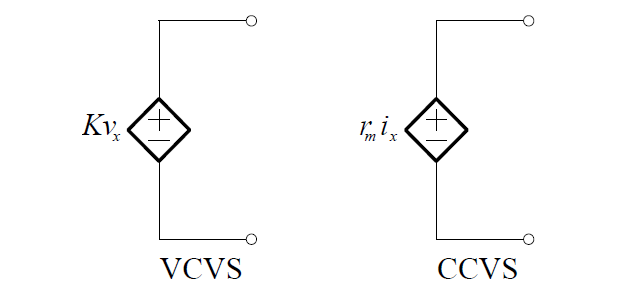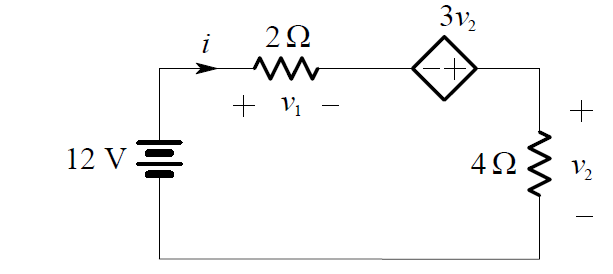Dependent Sources
An ideal source, either voltage or current, whose value depends upon some parameter (usually a voltage or current) in the circuit to which the source belongs is known as a dependent or controlled source.
The Dependent Voltage Source
A dependent voltage source establishes a voltage across its terminals, independent of the current through it, which is determined by the voltage or current at some other location in the electrical system. There are two types of dependent voltage source – the voltage-controlled voltage source (VCVS) and the current-controlled voltage source (CCVS).

Note that the dependent source is represented by a diamond-shaped symbol so as not to confuse it with an independent source.
These sources are mathematical models that are useful in modelling real circuits and systems, e.g. they are used in modelling operational amplifiers.
Example:
Consider the circuit shown below. This circuit contains a dependent source whose value in this case depends on the voltage across the 4 Ω resistor – it is a VCVS.

To analyse the circuit, we apply KVL and obtain:
v1 – 3v2 + v2 = 12
or:
v1 – 2v2 = 12
By Ohm’s Law:
v1 = 2i
and
v2 = 4i
Therefore:
2i – 2(4i ) = 12
2i – 8i = 12
– 6i = 12
i = -2 A
Hence:
v2 = 4i = -8 V
and the value of the dependent voltage source is:
3v2 = -24 V









